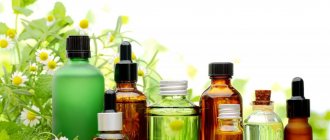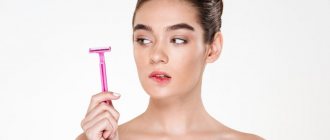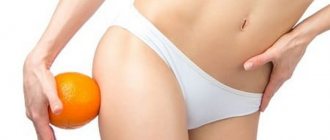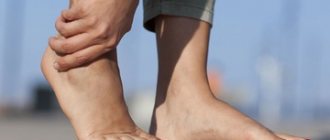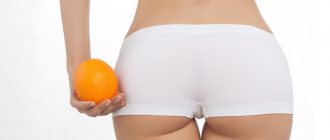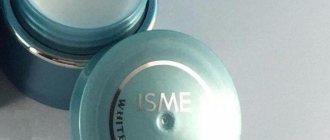When your skin constantly rubs against poorly fitting shoes, it puts unnecessary pressure on it. Over time, such friction begins to deform the skin, creating new growths called calluses.
Calluses cannot be called dangerous to human health, because in their essence they are the physical embodiment of the body’s protective reaction to too strong an external influence. In particular, calluses are often an occupational problem in some professions.
All this makes the question of how to remove different types of calluses especially relevant, because despite their safety, they cause quite unpleasant pain.
What is a callus?
The first step in understanding how to remove a callus is to find out what they are. They themselves are divided into two types: bone and skin, however, in the context of this article, it is the skin that will be considered.
Calluses appear as a result of constant pressure or friction on the same area of skin. By default it is quite small. In this area, subjected to physical impact, cells in the layers of the dermis begin to die at an accelerated rate.
Under normal conditions, they have time to peel off, however, during the formation of a callus, there is simply not enough of it. There is a gradual layering of layers of skin, they become more and more dense, which leads to the formation of calluses.
It is the feet that are most often susceptible to the appearance of calluses, since unsuitable shoes can easily disrupt normal blood circulation due to heavy loads, which leads to formations.
They most often appear in spring or summer, when women begin to choose shoes for the sake of beauty and fashion, and even inconvenience.
Popular gels
Callus products are more concentrated than ointments and creams, dry faster and are absorbed without residue or greasy residue. To facilitate application, such products are usually available with a dispenser or in the form of a pencil.
The most commonly used gels are:
- Wartner . Accelerates the healing process of dry formations. Apply with a special spatula once a day. This should be done carefully so that the composition does not get on healthy tissue. After four days, the stratum corneum of the skin will peel off. Price - from 515 rubles.
- ProtoKeratin is a gel with a keratolytic effect, highly effective, has a delicate texture and a good smell. The product not only gets rid of corns, but also prevents the formation of new ones, as it makes the skin elastic and soft. Contains urea, potassium hydroxide and plant extracts (aloe, chamomile, nettle). Available in volumes of 110 ml (350 rubles) and 250 ml (27 rubles). Available in volumes of 110 ml (350 rubles) and 250 ml (27 rubles).
- Callus Remover from Arabia . The alkaline environment of the gel promotes gentle treatment of wounds and complete exfoliation of keratinized tissue. Chamomile extract penetrates deep into the dermis and has a regenerating and antiseptic effect. The product has proven itself well among pedicurists, which confirms its effectiveness. You need to wear gloves when working with the product, and apply it pointwise. The product is sold in a 100 ml bottle with a dispenser. The minimum price is 665 rubles.
- Compact applicator in the form of a Wartner pen . The gel contains trichloroacetic acid, which loosens dead tissue well. It will take very little time to get rid of dry formations. Since the drug is very concentrated, it is consumed minimally. It should be used carefully and strictly adhere to the dosage. If applied correctly, results can be seen within three days. The cost of the pen starts from 535 rubles.
- Solomeya is a professional gel for removing corns and calluses. Contains moisturizing agents and plant extracts. Quickly and deeply penetrates the keratinized epithelium without affecting healthy cells. With regular use, you can forever forget about cracks, dry feet and growths. Directions for use: steam your feet, apply gel locally, cover with plastic and wait 7 minutes. Then rinse and treat the skin with a hard file. It costs about a hundred rubles.
Types of calluses
Due to special conditions affecting the process of the appearance of calluses, they can be divided into several types:
- Wet (water);
- Dry callus;
- Corns;
- Callus;
- "Chicken zholka."
Wet (water) callus
Appears due to wearing excessively tight shoes, which cause friction on certain areas of the skin.
A factor influencing the appearance of dropsy is increased sweating.
Moreover, such a callus can occur not only on the legs, but also on almost all parts of the body if pressure is constantly applied to it.
People with sensitive skin are especially susceptible to this problem, since it is quite easy to damage.
As soon as mechanical damage appears on the skin, liquid begins to accumulate due to sweat, forming a bubble protruding above the skin layer.
It causes slight pain in humans, so effort is required to remove it to prevent infection.
Dry callus
This type of callus is often a stage that occurs after a wet callus.
It is formed after prolonged pressure on the skin, very moderate, not strong, but constant.
The skin layers die more slowly, so the roughening of the dermis occurs at a gradual pace.
The end result is a keratinized area of skin with dead dermis of a gray or yellow hue with a slight elevation.
Very often, hard calluses act as an assistant if a person is engaged in physical work. In such cases, hard calluses become another protective layer that helps protect the body from damage.
As a rule, they do not cause pain, except in cases of excessive neglect when cracks appear in the skin. However, even in this case the pain will be slight.
Corns
This type is the most common.
At the initial stage, this type of hard callus does not cause discomfort.
They appear on the foot, namely its convex part, where the muscle-fat layer lies.
The standard color is yellow or dirty grayish. Corns are often quite large in size without clear boundaries.
Callus
The most dangerous type of calluses appears on the soles of the feet, usually in the space between the toes.
They got their name due to the presence of a rod several millimeters long in the center of the formation.
It is quite difficult to remove this type of callus precisely because of this rod.
If handled incorrectly, it causes severe pain due to small cracks that appear.
There is a gradual ingrowth of the callus into the soft tissue, so it is impossible to get rid of it at home.
"Chicken zholka"
Gradually, a small nodule turns into a fairly large callus without clear boundaries in the form of a rough growth.
A distinctive feature of the species is the presence of black dots.
It can cause pain when walking due to its rather soft structure.
A callus can appear only in those who are carriers of the human papillomavirus, and age does not play a role here at all.
The best socks for corns
Socks for calluses and corns operate on the principle of a peeling mask and are suitable for removing dead skin on the feet at home. They are made from dense polyethylene. Inside there is a special material impregnated with medicinal substances: urea, glycolic and salicylic acids, plant extracts and natural oils.
Vitex exfoliating foot socks
4.8
★★★★★
editorial assessment
93%
buyers recommend this product
The foot mask contains a natural complex of acids that delicately removes dead cells, as well as aloe vera extract, which heals cracks and revitalizes the skin. The natural composition moisturizes and softens the dermis, making the feet soft and tender. The package contains one pair of polyethylene socks of a universal size.
Advantages:
- softens rough skin;
- prevents cracks;
- stimulates metabolic processes;
- regulates the functioning of the sweat glands.
Flaws:
- cannot be used in the presence of fungal diseases.
Vitex exfoliating socks are placed on steamed, dry feet, fixed and left to act for 2 hours.
Pedicure socks Fabrik Cosmetology Setiva
4.7
★★★★★
editorial assessment
87%
buyers recommend this product
The Fabrik Cosmetology Setiva mask includes alkalis for deep foot peeling, green tea and aloe vera extracts. The socks are designed to remove corns, calluses, and treat cracked skin on the heels. The product is sold in sealed packaging. Once the mask is printed, it must be used immediately.
Advantages:
- high-quality removal of calluses;
- disappearance of unpleasant odor;
- deep hydration;
- prevention of fungal diseases.
Flaws:
- an allergic reaction is possible;
- require long-term use.
Socks do not give immediate results: rough skin begins to come off 5-6 days after using the peeling mask. The cleansing process needs to be carried out for 2 weeks.
Causes of calluses
Each type of callus has its own common causes:
- Choosing low-quality or unsuitable footwear;
- Wearing socks larger than required;
- Working with construction and gardening tools, playing musical instruments without using gloves;
- Walking completely without shoes;
- Excess weight, heavy gait;
- Failure to follow the rules of foot and shoe care, lack of hygiene, especially with increased sweating.
However, it is possible to name a number of individual reasons that affect specifically a certain type of callus.
Reasons for the appearance of a wet look:
- Tight and uncomfortable shoes;
- Use of working and musical instruments.
In general, this appearance occurs precisely because of uncomfortable friction combined with excessive sweating.
The hard appearance occurs due to:
- Inappropriate shoes;
- Constant participation in sports or heavy physical labor;
- Flat feet or wearing high-heeled shoes;
- Due to frequent drawing or writing;
- Joint diseases: arthritis, osteoarthritis;
- Hypovitaminosis with vitamin A.
Causes of corns:
- Wearing high-heeled shoes with thin soles;
- Walking without shoes;
- Shoes made from artificial materials that create high-thermal and humid conditions for the feet;
- Leg injuries or constant carrying of heavy loads;
- Wearing socks that are too big;
- The insole of the shoe has deteriorated or is simply deformed;
- Frequent squeezing of the feet due to foreign debris getting into the shoes.
Callus appears due to:
- The presence of a virus or fungus in the body;
- Getting a foreign object under the skin layer and slowly becoming overgrown with hard tissue;
- Incorrect shoes with redistribution to the forefoot;
- During the transition of the callus stages from wet to dry, it grows into the soft tissue to form a core.
Chicken gall is formed only due to the presence of the human papillomavirus in the body.
However, for the development of HPV there must be a provoking factor:
- Heavy sweating;
- Suppressed immunity;
- Bad shoes;
- Damaged skin of the feet or excessive dryness;
- Flat feet.
In conclusion
When choosing a method of dealing with dry calluses, it is worth considering that any remedy may have certain contraindications and side effects. Therefore, before using alternative medicine, it is recommended to consult with specialists. Self-medication in this case can lead to undesirable consequences and worsen the condition of the skin. Therapy must be carried out without fail. It is not recommended to start the process, since it is easier to remove the callus root at the initial stage, before it has grown.
Locations of different types of formations
Calluses are mainly concentrated on the feet. The most affected areas are the toes, heels, soles or sides of the feet.
Due to constant stress, they often cause pain or simply cause trouble for their owner. The localization of calluses is mainly determined by the structural features of the foot, the presence of problems in the orthopedic department, the preferred type of shoes and lifestyle.
Calluses on fingers
Calluses on the fingers appear mainly due to wearing very tight shoes. They are often caused by narrow toes in fashionable shoes, which cause chafing on the balls and sides of the toe.
They also constantly have a physical impact on the spaces between them, so after a while folds appear, and then blisters and formations.
The same effect is caused by the presence of bone damage to the fingers. Uncomfortable shoes also cause hard calluses on the little toes.
Calluses on the heels
Heel formations appear as a result of constant foot discomfort from wearing uncomfortable shoes. Gradually, the formations that form from flip-flops and open sandals develop into rough corns.
Calluses on the feet
Formations on the feet are the most common. They usually appear on the side of the foot, near the heel or on the balls of the foot. They are a constant problem for women who prefer to wear high-heeled shoes even in ordinary situations.
Such shoes have a very strong impact on the feet, especially if you are overweight or have orthopedic problems. Plantar lesions are rarely soft or watery.
They usually do not cause pain, but they often gradually grow into the dermal tissue, causing disturbances in normal blood circulation.
The best adhesive plasters for calluses
Calluses cause severe discomfort when walking and make physical activity difficult. The patch soothes pain, minimizes shoe contact with abraded skin and prevents bacteria from entering the wound. There are patches on sale for dry and wet calluses, which differ from each other in the set of active ingredients.
Compeed patch for wet calluses on feet MixPack
5
★★★★★
editorial assessment
97%
buyers recommend this product
Compeed is designed specifically for wet calluses. The patch is based on innovative hydrocolloid particles that absorb discharge from the wound and prevent it from drying out. The product protects the blister from infection, promotes rapid healing and prevents scar formation. The package contains 5 patches with an atraumatic pad.
Advantages:
- maintains optimal humidity levels;
- protects the blister from friction;
- relieves pain;
- does not peel off when wet.
Flaws:
- the price is high.
The use of the Compeed patch guarantees rapid healing of blisters and prevents complications.
Salipod
4.8
★★★★★
editorial assessment
93%
buyers recommend this product
The main active components of the patch are salicylic acid and sulfur. These substances provide keratolytic and antimicrobial effects, soften corns and dry calluses. The ingredients penetrate into rough tissues as deeply as possible and quickly get rid of old formations.
Advantages:
- softens keratinization;
- inhibits fungal flora;
- increases blood circulation;
- reduces discomfort when walking.
Flaws:
- there is a risk of burns.
Salipod is glued to the problem area and left for 1-2 days. Then they remove it, steam the foot and carefully clean off the softened callus.
Drug and physical treatment of calluses
If you need to remove any type of callus, the first thing you should do is consult a surgeon or dermatologist. It is these doctors who have the right to make a diagnosis and determine subsequent treatment.
You should not choose a treatment method on your own, especially piercing the formation, since the callus is quite similar in appearance to a wart, which should never be damaged
.
If the doctor has diagnosed a callus, then depending on its type, you should pay attention to the following treatment.
Wet callus
It is best not to touch a small wet callus. Nowadays pharmacies sell special types of patches that will prevent damage to the formation if you simply stick them on top.
Another thing is large dropsy, which causes pain when walking, and the water bubble can burst.
Step-by-step instructions for getting rid of wet calluses:
- Piercing is required: this is done only with a previously disinfected needle;
- the callus itself also needs to be coated with brilliant green or iodine;
- it is pierced from the side, along a parallel line to the skin;
- piercing perpendicularly is absolutely prohibited, since the skin that forms the bottom of the callus may be damaged;
- the most important thing when carrying out the procedure is not to damage the walls of the formation too much;
Tetracycline ointment
Erythromycin ointment
Levomekol
If an infection occurs during a puncture, then you should contact a surgeon for an operation to completely remove the walls. You cannot do this on your own, since the surgeon jointly carries out the treatment required by the case and prescribes treatment.
Dry callus
Quite often, because dry calluses are not painful, people do not strive to get rid of them. This approach is incorrect not only because of the loss of aesthetic appearance, but also because such damage can cause microcracks.
Most often, products based on salicylic acid are used to remove this type:
- Salicylic ointment - average price 20 rubles ;
- Agave - average price 80 rubles ;
- Nemozol - average price 70 rubles ;
- Cream Namozol - average price 110 rubles ;
- Collomak - average price 350 rubles ;
- Pasta “5 days” - average price 60 rubles .
Mode of application:
- the ointment is applied to previously washed feet;
- a patch is glued over it so that the product remains in one place;
- to prevent the drug from affecting surrounding tissues, the patch is glued with a hole cut out according to the size of the callus;
- the procedure is repeated once or twice a day;
- The duration of treatment is 28 days maximum, usually this time is enough to burn the callus from its bed.
Salicylic ointment
Agave
Nezosol
Cream Namosol
Collomak
Paste “5 days”
Products with lactic acid, which serves as a softener for growth, have a milder effect:
- Super Antimozolin - average price 100 rubles ;
- Lactic acid solution - average price 80 rubles ;
- Cream Green Pharmacy - average price 170 rubles ;
- Cream Effect - average price 50 rubles .
Mode of application:
- apply a thick layer to the callus on dry, washed feet;
- cover the top with wax paper;
- wear woolen socks;
- after 2 hours, the softened skin is carefully scraped off with a special nail file;
- the remaining cream is washed off with warm water;
- the procedure is repeated after 1-2 days.
Super Antimozolin
Lactic acid solution
Cream Green Pharmacy
Cream Effect
Aggressive help can be provided by products based on sodium hydroxide, which cause the callus to darken, but do not cause pain due to necrosis:
- Super Chistoto - average price 30 rubles ;
- Super Celandine - average price 25 rubles ;
- Antipapillom gel - average price 130 rubles .
Mode of application:
- apply to previously cleaned and steamed callus;
- apply very carefully so as not to touch healthy skin; there is a special applicator for this;
- within 1-2 days, dead tissue gradually falls off;
- If necessary, you can repeat the application of the product.
Super Celandine
Super Celandine
Antipapillom gel
Refrigerants and phenol-containing products have shown effectiveness:
- Kondilin - average price 600 rubles ;
- Verukkatsid - average price 200 rubles ;
- Wartner - average price 500 rubles ;
- CryoPharma - average price 700 rubles .
Mode of application:
- the callus is very carefully treated with the solution;
- air dried;
- it gradually dries out and falls off;
- If necessary, the treatment is repeated.
Kondilin
Verukkacid
Wartner
CryoPharma
Physical intervention
If the dry growth cannot be removed with ointment, then surgical or cosmetic intervention can be used. These will be procedures for treating damaged areas with liquid nitrogen or laser.
After the procedure, you need to carefully monitor the skin, apply antiseptic ointment to the site where the growths are removed and cover with a band-aid to avoid infection.
You cannot cut out the dry type of formations yourself, since there is a high probability of infection in a new wound.
Corns
To remove corns, a consultation with a dermatologist is required.
The most successful methods of disposal are cosmetic procedures:
- Laser destruction is used to treat corns of any size, so it is considered the most reliable. Pain is minimal, recovery time is short, recurrence is extremely low;
- Cauterization with liquid nitrogen is usually used to remove deep growths.
Among the medications to get rid of the problem, keratolytic agents, sold in any pharmacy, are mainly used. A suitable product may be based on salicylic acid.
This type of ointment includes:
- Doctor - average price 140 rubles ;
- Bensalitin - average price 80 rubles ;
- Nazosol 911 - average price 110 rubles ;
- Keratolan - average price 130 rubles ;
- Betadermic - average price 180 rubles .
Special patches can help:
- Salipod - average price 50-100 rubles ;
- Tianhe - average price 120 rubles ;
- Compeed - average price 300 rubles .
Salipod
Tianhe
Compeed
Such patches already contain a composition that helps relieve pain after the first use, and after a week completely get rid of this type of growth.
Relatively recently, another Japanese invention appeared that allows lovers of high heels to enjoy smooth feet - socks, the average price is from 200 to 1450 rubles . They act as both a bath and a cream for the whole night.
Callus
Removing a rod growth is quite difficult, because the first step is to get rid of the rod itself. It is best to consult a doctor for this.
The following types of removal are usually used:
- Laser removal
Drilling - complete removal of the root of the callus to prevent relapse; - Laser removal - for particularly advanced cases in order to burn out the root;
- Cryotherapy.
All procedures are carried out quite quickly. It only takes 1 session to remove the callus.
"Chicken zholka"
To remove the “chicken jowl” type, surgical techniques are used:
-
Laser method - with its help you can reduce even a deep callus to a small spot; - Radio wave method - carried out using a special radio knife;
- Electrocoagulation —used for small tumors, affects the growth with high-frequency current.
- Cauterization with liquid nitrogen.
The best ointments for calluses
The ointment for treatment should be selected depending on the type and depth of calluses. For corns, doctors recommend preparations based on lactic acid, salicylic acid and keratolytic agents - they soften, disinfect and exfoliate rough tissue. Wet calluses are pre-treated with an antiseptic and then a healing ointment is applied under the bandage.
Mozolin
4.9
★★★★★
editorial assessment
95%
buyers recommend this product
Mozolin includes benzoic and salicylic acids, which have a pronounced keratolytic effect. An additional component is lemon essential oil, which destroys bacteria and heals cracks. The composition softens the stratum corneum and is intended for dry calluses. Available for sale in 30 ml plastic packaging.
Advantages:
- bactericidal effect;
- softening and natural moisturizing of the skin;
- nice smell;
- minimum side effects;
- affordable price.
Flaws:
- not suitable for children under 3 years of age.
Callus is applied to the steamed callus, a gauze bandage is applied on top, secured with a band-aid for 6-8 hours and then the softened tissue is removed with pumice. Procedures are carried out daily until the problem is completely resolved.
Diprosalik
4.8
★★★★★
editorial assessment
91%
buyers recommend this product
Diprosalik ointment has keratolytic and anti-inflammatory properties. Its active ingredients are salicylic acid and betamethasone dipropionate. The drug softens the outer layer of skin and helps exfoliate calluses from rough feet. In addition, the ointment is in demand for the treatment of psoriasis, eczema, lichen, and dermatitis. Sold in 30 g aluminum tube.
Advantages:
- relieves swelling;
- destroys harmful bacteria;
- softens the skin;
- facilitates the removal of keratinized areas.
Flaws:
- may cause an allergic reaction.
Diprosalik ointment has proven itself in the treatment of dry and core calluses, especially if their appearance is accompanied by a bacterial or fungal infection.
Sintomycin 10%
4.8
★★★★★
editorial assessment
89%
buyers recommend this product
Syntomycin ointment contains 100 mg of chloramphenicol, castor oil, sorbic acid. This is a broad-spectrum antibiotic recommended for the treatment of burst blisters. The drug blocks the infectious process, accelerates healing, and minimizes pain. Sold in 25 mg dark glass jars.
Advantages:
- destroys microbes;
- dries out the skin;
- relieves inflammation;
- increases blood flow;
- it's cheap.
Flaws:
- not suitable for people prone to allergies.
Doctors prescribe Syntomycin if the blister is injured and an infection has entered the wound. The ointment is applied in a thin layer and sealed with a bactericidal plaster.
Pasta Dr. Foot
4.6
★★★★★
editorial assessment
90%
buyers recommend this product
Pasta Dr. Foot consists of urea, allantoin, celandine and D-panthenol. These substances soften the roughened epithelium, removing dead skin layer by layer. The ointment regenerates damage, softens and has a powerful antiseptic effect. Designed to care for rough skin and remove corns. Sold in tubes of 20 ml.
Advantages:
- restores the elasticity of the dermis without drying it out;
- promotes the formation of healthy epithelium;
- helps with old dry calluses.
Flaws:
- long course of treatment.
To get rid of corns, Dr. Foot will have to be used for at least a week, strictly following the instructions.
READ ALSO
12 best foot creams
Removing different types of calluses at home
If you do not want to use surgical methods, then traditional medicine also has a number of useful recipes that help get rid of different types of calluses.
Wet callus
If you do not want to pierce the callus with a needle, you can use the following recipes:
- Salt bath - pour a couple of tablespoons of salt into 2 liters of warm water, then soak your feet in it for about ten minutes. Be sure to rinse them to remove excess salt. Chamomile or milk baths will have a similar effect;
- Essential oil lotion – the composition of the product consists of vegetable and tea tree essential oils in a concentration of 3 to 1. Wet a cotton swab with the product and apply it to the callus. It is recommended to do this lotion at least 4 times a day, since tea tree oil, in addition to its healing effect, will have an antiseptic effect;
- Potato lotions - potatoes are grated on a fine grater, after which the pulp is spread on cheesecloth. A gauze swab is rolled into a bag and applied to the damaged area, after which it is fixed with a bandage or plaster. Change once a day;
- Lightly rub fresh plantain leaves
Dry appearance of calluses
Traditional methods act as additional treatment; they are especially useful for healing damaged skin.
Several effective recipes:
- Onion compress - put grated onion gruel on the place of the callus, wrap the leg in plastic and leave for the whole night. In the morning after removing the compress, walk over the area with a pumice stone;
- A fresh aloe leaf with oozing juice must be applied to the injured area and fixed. It is best to do the procedure at night so that the effect lasts for at least 8 hours;
- Tomato pulp - use a similar method, however, the compress should not be kept for more than 3 hours;
- Baths made from a decoction of pine buds or salt baths, a solution of potassium permanganate - steam your feet in them for no more than 15 minutes.
Getting rid of corns using folk remedies
Before using home methods, it is recommended to consult a dermatologist.
Folk remedies:
- Sour milk bath - slightly warm the sour milk, then place your feet in it for half an hour. After the bath, treat your feet with a mixture of 1 part glycerin and 1 part castor oil;
- Onion compress – cut the onion into thin pieces, apply them to the callus and wrap it in a plastic bag. Secure everything on top with warm woolen socks and leave everything overnight. In the morning after removing the onions, wipe your feet with pumice and sprinkle with talcum powder;
- Apple cider vinegar compress – the mixture will require 1 tablespoon each of apple cider vinegar and sunflower oil, as well as 1 egg. Whisk all ingredients thoroughly and treat the damaged areas, put on warm socks and leave everything overnight. In the morning, take a salt bath and scrub with a brush. To get rid of corns you will need only 5 sessions;
- Soap-soda bath - scoop up 1 tablespoon of laundry soap, pour it into hot water, add a tablespoon of soda and a little ammonia. Keep your feet for half an hour. The bath is highly effective.
Callus
Traditional methods will not help get rid of it at home, however, they can have a concomitant effect.
You can use the following recipes:
- Mustard bath – dissolve mustard powder in hot water. Use no more than 1 tablespoon per liter of water. Keep your feet in such conditions for about half an hour, then rub them with pumice;
- Soap and soda bath for hands or feet. If the callus core was very small, then about 10 procedures will show their effect;
- Table vinegar - pour a small amount of vinegar onto a regular patch and stick it on the callus. Walk with it during the day, then remove it at night, and apply a fresh patch in the morning;
- fresh celandine juice to the damaged area of the foot, treat the callus with it, and then seal it with a band-aid overnight.
"Chicken zholka"
HPV cannot be cured unless it is infected; it remains in the human body for life. However, you can prevent its spread.
Folk recipes will help with this:
- Fresh celandine in the summer. The yellowish juice must be rubbed into the callus 2 times a day, without getting it on clean skin. After the chicken jolka becomes softer, it can be treated with pumice;
- Table vinegar will make the procedure effective, but painful. Use a cotton swab or pipette for spot application;
- Banana peel needs to be applied to the damaged area for a couple of hours.
The best pencils for calluses
Callus sticks are a good alternative to regular plasters. These are small sticks with a compressed gel-like rod. In addition to anti-callus, pencils have an antifungal effect. They soften the keratinized dermis, heal wounds, relieve pain and create an invisible protective layer that protects the skin from infection and new abrasions.
Kinexib stick
4.9
★★★★★
editorial assessment
94%
buyers recommend this product
The transparent stick forms a reliable layer between the skin and shoes, reducing friction and also preventing the formation of calluses and abrasions. Contains vitamin E, aloe vera, dimethicone, menthol. These ingredients moisturize the skin, soothe irritation, and provide a slight cooling effect. The stick with a roll-on applicator is sold in transparent packaging.
Advantages:
- convenient bottle;
- no odor;
- elimination of swelling;
- protection against chafing;
- effective removal of roughness.
Flaws:
- the treatment must be repeated several times during the day.
The Kinexib stick prevents the appearance of wet calluses and helps to fade existing abrasions.
Express applicator Scholl 2 in 1 Corn Express
4.8
★★★★★
editorial assessment
90%
buyers recommend this product
The Scholl applicator contains salicylic acid and panthenol, which dry out watery calluses and soften keratinized calluses. The patented formula provides a bactericidal and disinfectant effect and protects against painful, unaesthetic abrasions. The pencil soothes inflamed skin after the first use.
Advantages:
- softens rough skin;
- quickly stops the inflammatory process;
- accelerates regeneration;
- moisturizes.
Flaws:
- ends quickly;
- may cause allergies.
In rare cases, Scholl 2 in 1 Corn Express may cause irritation, so it is advisable to test for an allergic reaction before use.
Preventing calluses
With proper prevention, the appearance of any types of calluses is quite easy to get rid of.
All you need to do is follow a few simple rules, and then education will never be disturbed:
- Buy comfortable and high-quality shoes: do not run primarily after fashion and beauty, throwing comfort back;
- buy a new pair in the evening;
- before putting it on when going out, spend some time at home with a thick sock so that it adjusts;
Making baths
Since it is unlikely that it will be possible to remove the core of a dry callus using conventional means, water procedures can be carried out. Baths with soap and soda solution are considered ideal. This procedure allows you to remove dry callus with a small core.
To prepare the solution, you need to heat the water and add a little soda and soap to it. The duration of the procedure is at least half an hour. After taking such baths, it is recommended to remove the remnants of dry calluses with pumice. If the root is not very long, then after 5-10 procedures it may fall out on its own.
You can also take mustard baths to combat dry calluses. To do this, the powder is diluted in hot water. The duration of the procedure is at least half an hour. Course – up to 10 sessions. After the specified number of procedures, the small rod may come out on its own.
Treatment
Treatment methods for calluses of different localizations are largely similar, since keratinization of tissues has a single mechanism of occurrence, symptoms and unaesthetic appearance.
Calluses on fingers
Dry calluses on the toes tend to cause excessive growth of keratinized tissue, interfere with normal life, and affect gait due to shooting pains. Typically, finger calluses have a core, change bone tissue, and lead to the appearance of overgrowth of the bone of the thumb. Effective treatment methods are:
- applying a patch with pepper base (Salipod, Cosmos);
- rubbing in creams and ointments based on pepper, ethers, medicinal substances;
- application of traditional medicine methods.
If traditional treatment is ineffective, they resort to hardware methods: nitrogen treatment, hardware pedicure, cryodestruction and others. When treating with folk remedies, it is fashionable to use any means until positive results are achieved.
On the big toe and little toes
Calluses on the big toe tend to grow, forming a large corn. With core calluses, there is a risk of leaving the root behind when removed independently. If there are no clinical improvements from home treatment methods, then it is necessary to resort to radical methods of removing callus in cosmetology clinics.
On the foot and heel
A common type of callus that can be treated by steaming the feet, applying a pepper patch, and home methods (vinegar, celandine, alcohol tinctures). Heel calluses must be regularly rubbed with pumice and steamed to soften the tissue and remove the callus, if any.
On the hand
Calloused hands are an aesthetic defect that occurs not only among men in difficult professions, but also among women who engage in specific work, sports, and carrying bags. The easiest way to get rid of calluses on your hands is to just find modern pharmacy creams in pharmacy chains and use them as a regular hand cream.
For the treatment of dry calluses to be effective, you should properly care for the affected skin. The therapeutic arsenal against dry calluses includes many different means and methods: medications (ointments, creams), hardware techniques and surgery, homemade recipes from nature, patches with irritating components. Regardless of the location of calluses on the feet and hands, the treatment methods are the same.

